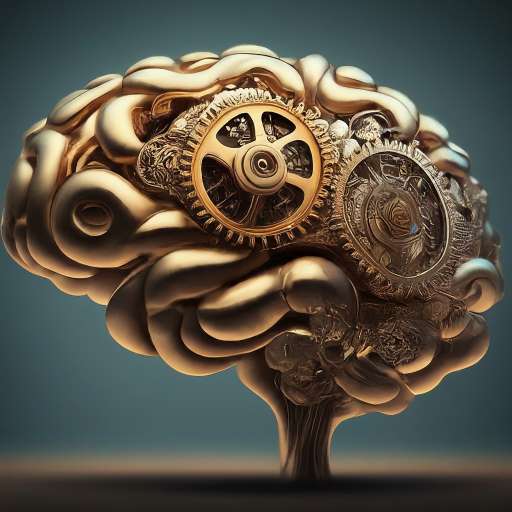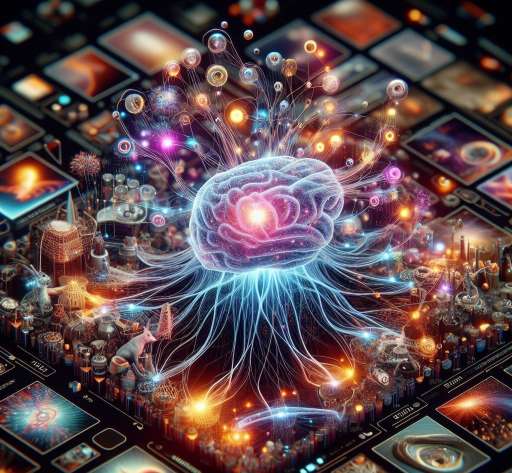In recent years, the term “deep learning” has surged in popularity, but its intricacies may still elude many. This comprehensive guide aims to demystify this transformative technology, shedding light on its inner workings, applications, and potential implications for the future of artificial intelligence (AI).
What is deep learning?
Deep learning is a type of machine learning that uses artificial neural networks to learn complex patterns and relationships from data. Artificial neural networks are inspired by the human brain, and they can be used to solve a wide variety of problems, such as image recognition, natural language processing, speech recognition, and more
Understanding Deep Learning:
At its core, deep learning mirrors the learning process of the human brain, albeit in a computational framework. It falls under the umbrella of AI and leverages artificial neural networks (ANNs), drawing inspiration from the neural connections in our brains. These networks autonomously extract intricate features and patterns from data, enabling machines to make informed predictions and decisions.

The “Deep” in Deep Learning:
The term “deep” signifies the multi-layered architecture of neural networks employed in deep learning. Unlike traditional AI systems reliant on predefined rules and features, deep learning algorithms autonomously learn hierarchical representations of data through layers of interconnected neurons. Each layer refines the data representation, facilitating the learning of progressively complex and abstract features.
Applications and Impact:
Deep learning’s versatility has revolutionized numerous fields, yielding tangible benefits across diverse domains:
- Healthcare: Deep learning algorithms analyze medical images with unprecedented accuracy, aiding in early disease detection and treatment planning.
- Personalization: Recommender systems powered by deep learning algorithms offer tailored recommendations, enhancing user experience in e-commerce and content platforms.
- Security: Facial recognition technology, driven by deep learning, bolsters security measures in various sectors, from smartphone authentication to surveillance systems.
- Scientific Discovery: Deep learning accelerates scientific breakthroughs by facilitating drug discovery, materials science research, and complex data analysis. Challenges and Considerations
Despite its transformative potential, deep learning poses several challenges and ethical considerations:
- Bias and Fairness: Deep learning models can perpetuate biases present in training data, leading to unfair or discriminatory outcomes.
- Explainability: Understanding the decision-making process of deep learning models remains a challenge, raising concerns about accountability and transparency.
- Computational Resources: Training deep learning models demands substantial computational power and energy, posing barriers to entry for smaller organizations and researchers. The Future Landscape:

Career Opportunity in Deep learning in 2024
Looking ahead, the future of deep learning holds promises across various domains:
- Autonomous Vehicles: Deep learning algorithms will play a crucial role in developing self-driving cars capable of navigating complex environments safely and efficiently.
- Precision Medicine: Deep learning will enable personalized treatments tailored to individuals’ genetic makeup, revolutionizing healthcare delivery.
- Environmental Sustainability: Deep learning models can contribute to climate change mitigation efforts by predicting environmental phenomena and optimizing resource management strategies.
Ready to learn more? for star your deep learning journey in 2024.
- The Deep Learning Book: https://www.deeplearningbook.org/
- Google AI Blog: https://blog.research.google/
- OpenAI: https://openai.com/
- find online courses on your research!
Key Components of Deep Learning:
- Neural Networks: The building blocks of deep learning, neural networks are composed of interconnected layers of neurons. Each neuron processes input data and transmits signals to neurons in the subsequent layer, ultimately producing an output.
- Layers: Deep learning models consist of an input layer, one or more hidden layers, and an output layer. The hidden layers extract increasingly abstract features from the input data, enabling the model to learn complex patterns.
- Activation Functions: Activation functions introduce non-linearities into the neural network, allowing it to approximate complex functions and learn from non-linear data.
- Backpropagation: A critical algorithm in deep learning, backpropagation adjusts the model’s parameters (weights and biases) based on the difference between predicted and actual outputs, thereby minimizing prediction errors.
- Optimizers: Optimizers, such as Stochastic Gradient Descent (SGD) and Adam, facilitate the iterative process of updating the model’s parameters during training, converging towards optimal solutions.

How image generator works
Generative Adversarial Networks (GANs) and diffusion models. Both use deep learning but with different methodologies:
GANs:
- Data Preparation: A massive dataset of images and their corresponding text descriptions is prepared.
- Network Setup: Two deep learning networks are created:
- Generator: Takes random noise as input and tries to create realistic images.
- Discriminator: Analyzes the generated images and tries to determine if they are real or fake.
- Adversarial Training:
- Generator: Learns from the Discriminator’s feedback, gradually improving its ability to create images that fool the Discriminator.
- Discriminator: Improves its ability to detect fake images as the Generator gets better.
- Image Generation: After extensive training, the Generator can create new, realistic images based on text prompts or random noise.
Diffusion Models:
- Data Preparation: A large dataset of images is used for training.
- Latent Space: A low-dimensional representation of images is created, capturing their essential features.
- Diffusion Process:
- Real images are gradually corrupted with added noise, making them unrecognizable.
- The model learns to reverse this noise addition process.
- Image Generation: Given a text prompt and a starting point (random noise), the model gradually removes noise, guided by the information in the prompt, ultimately creating a new image.
Two free image generator examples
In conclusion, deep learning represents a paradigm shift in AI, unlocking unprecedented capabilities and opportunities across industries. By addressing its challenges and harnessing its potential responsibly, we can steer towards a future where intelligent systems augment human capabilities and drive meaningful progress.




Leave a Reply